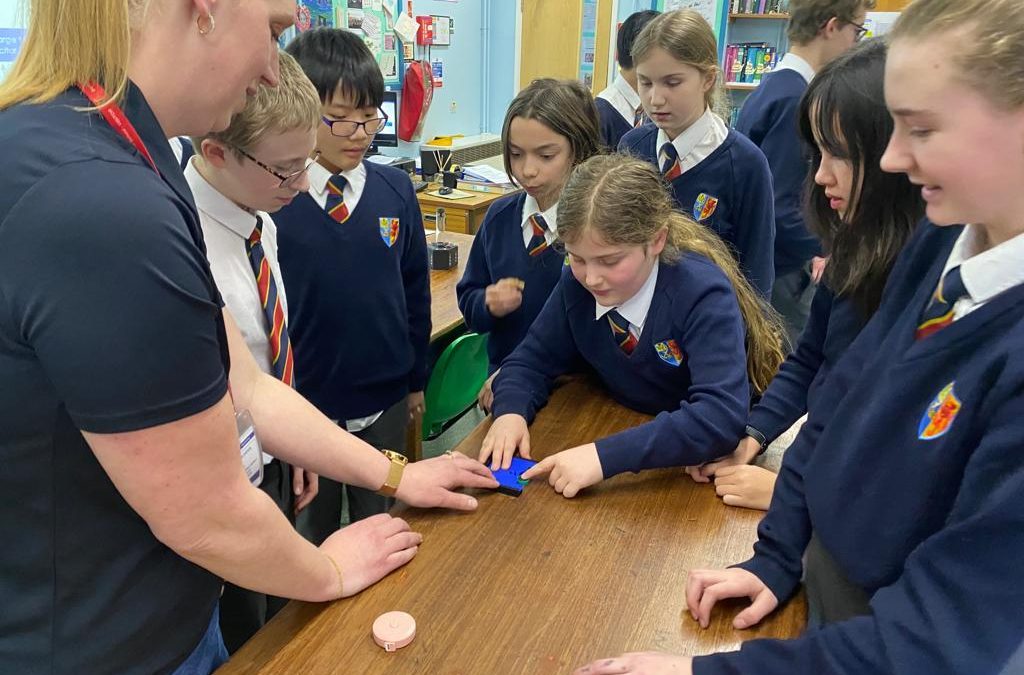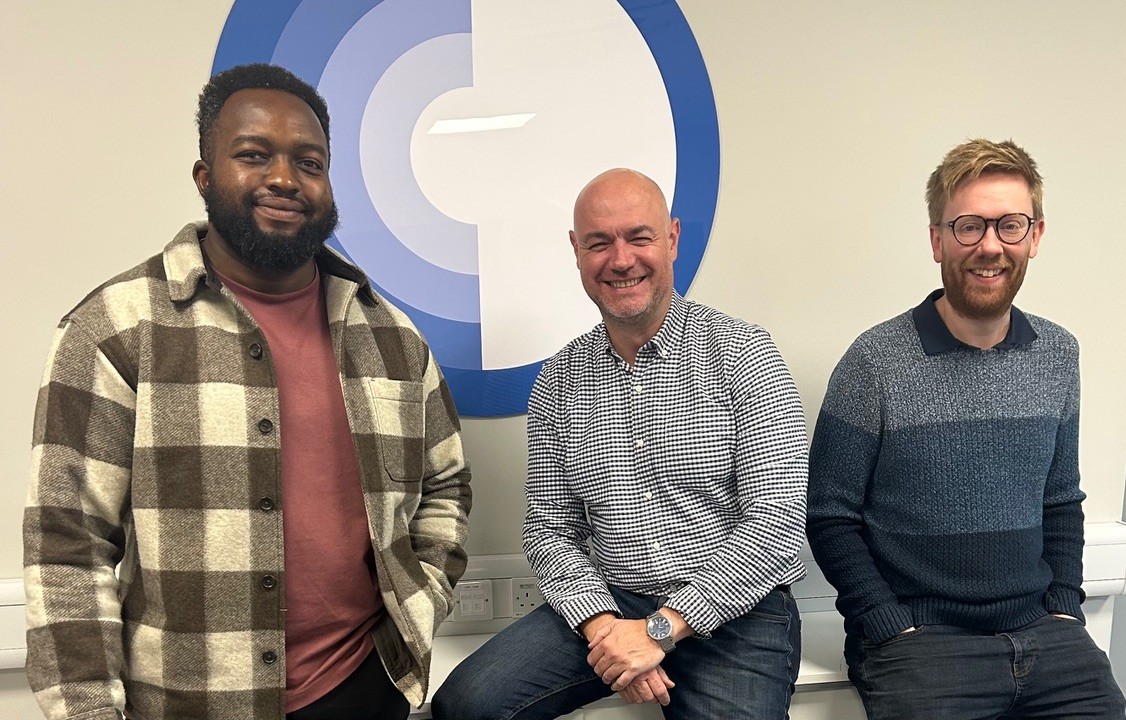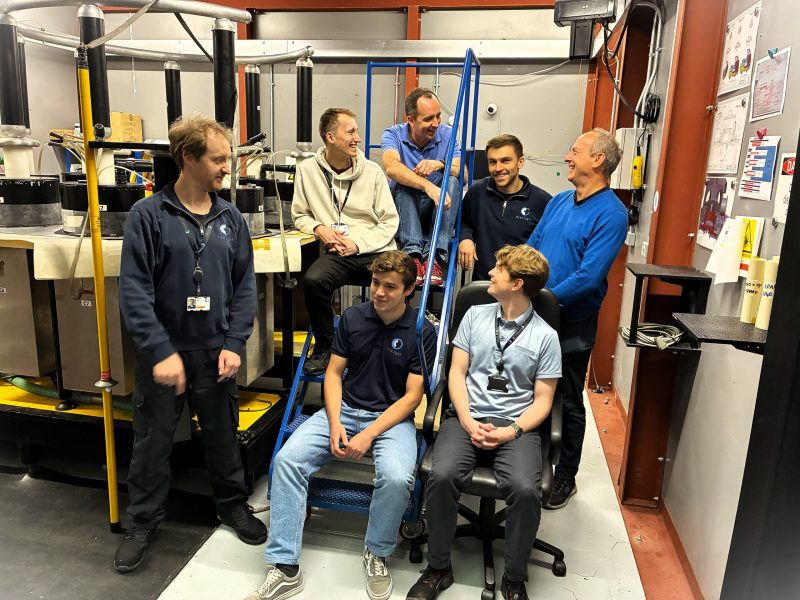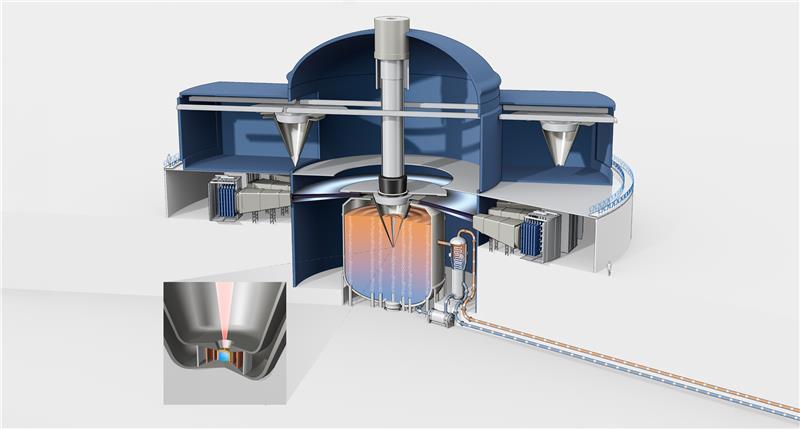Delivering commercial fusion energy to power our homes, technology and transport is undoubtedly a marathon, not a sprint. As part of the race to net zero in 2050, of which fusion energy is a core solution, it’s imperative that the fusion and wider Science, Technology, Engineering, and Mathematics (STEM) community engage and inspire the next generation of innovators.
As part of this, our team at First Light are passionate about playing their part, spreading the message on why our planet needs the next generation of students and school-leavers to be part of the solution in solving the urgent need to decarbonise.
Last month, we kicked off our fusion and STEM outreach at two schools in Oxfordshire to talk about fusion energy, what fusion is, and how it can transform the world they will live in 10, 20, 30 years and beyond. Only by harnessing STEM research can we begin to solve many of the global challenges we face today, not least climate change.
Engaging young innovators in the fusion journey as well as the STEM sector is vital to the future of the UK economy, reflected in the new Government department recently launched to focus on science, technology and innovation. And, aside from that, fusion and science is a fun and rewarding career to be involved in.
Chipping Norton School
On 31 January, we were delighted to visit students at Chipping Norton School. Led by our very own Rosie Barker and Mila Fitzgerald, both scientists at First Light, we presented to year 10 and 11 pupils and held a practical laser maze activity which involves aligning lasers giving the students a taste of what it’s like to be an experimental physicist.
We then held a one-hour lecture with the school’s sixth formers, talking about fusion and our unique approach to fusion energy. Rosie and Mila both gave overviews of their careers too and explained how they turned their passion for physics into a real-life career for a start-up that’s contributing to solving the clean energy crisis.
Bartholomew School
Shortly after on 2 Feb, Rosie Barker, along with Cristian Dobranszki and Michelle Hammersley from First Light visited Bartholomew School in Eynsham, West Oxfordshire. The team ran ‘STEM Club’ for years 7s and 8s talking all things fusion.
Students were able to then do a live experiment to demonstrate our unique projectile approach to fusion where they had to use magnets to launch projectiles (other magnets) to demonstrate magnetic launch.
Rosie Barker, Scientist at First Light, said:
“It is so important for children of all ages to learn about fusion because fusion could be the solution to the climate crisis and will therefore directly impact all of our futures. If we are to deliver commercial fusion energy – the ultimate source of clean energy – we need a steady stream of talent and interest from high school students. They are part of the solution.
“We need more people from all backgrounds to pursue a career in STEM and fusion in particular, and I hope that showing students early how exciting and rewarding a career in STEM can be will encourage them to do this. We’re looking forward to doing more over the coming months across the county and beyond.”
Dr. Robert Hagan, Head of Science at Chipping Norton School, said:
“The talk was hugely engaging and students were keen to ask questions at the end. The talk led to an invaluable discussion about careers and both Mila and Rosie’s career paths which showed a diversity of roots to the same position, and advice on research career paths in general. Researchers often struggle to be aware of the previous knowledge of students, but the level was perfect for those who attended. We are very grateful for the talk and would highly recommend Mila and Rosie to other schools.”
Mrs Lee Eakins, Head of Physics at Chipping Norton School, said:
“I just wanted to give you both another incredible thank you for your fantastic outreach! I spent the rest of the week asking my students what they thought, and it was universally positive. The sixth formers were genuinely enthralled!”
Dr. Lindsay McDowell, Bartholomew School, said:
“We think that it [the session] was all in all fabulous. The students were so interested and asked so many fabulous questions. I had a few students come back the following day to ask about the next session and their comments made me smile including: ‘I can’t believe these guys can make tiny suns in their labs, that’s awesome!’ and ‘I think I’m going to be a physicist, what do I need to do to get there?.’”
If you would like the team to visit your school, please contact us at: outreach@firstlightfusion.com



